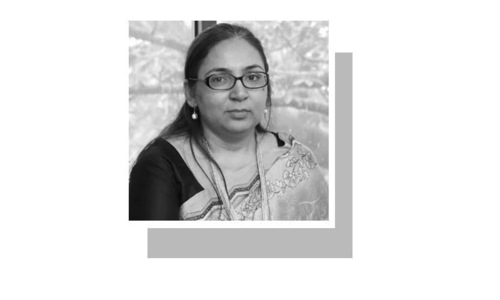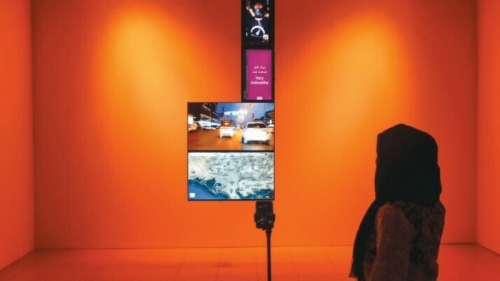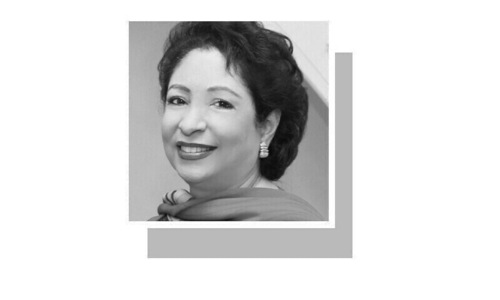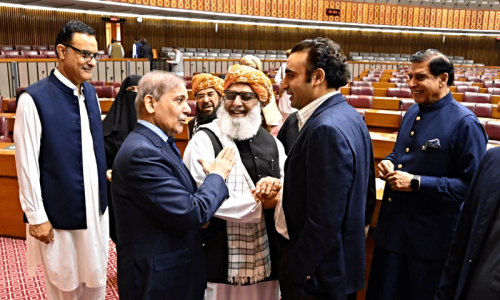
THERE are several Southeast Asian countries fortunate enough to bring socioeconomic prosperity to their people within a generation. On the other hand, there are countries that, despite decades of high growth rates, are still chasing an elusive ‘take-off’. Pakistan is one of those countries.
In its early years, in spite of major handicaps, we achieved an intermittent growth rate of about six per cent over four decades. As hopes were raised for a better future, even countries like South Korea sought to emulate Pakistan’s planning model. By the end of the Ayub era, however, it became clear that this ‘golden age’ of development not only failed to impact the lives of millions of disadvantaged groups, but also created massive inequalities due to the regime’s discriminatory policies. It was no surprise that, far from a ‘take-off’, this led to the country’s dismemberment.
This article is not about Pakistan’s economic situation. It is about a ‘development surprise’. Recently, Bangladeshi economist Wahiduddin Mahmud predicted that his country is on the verge of becoming the next Asian Tiger. This is the same country that, prior to 1971, Pakistan’s ruling elite felt was dragging economic growth down. Far from mourning its separation, many thought it was good riddance to the ‘bottleneck’ that was holding West Pakistan back. Almost 50 years later, it is interesting to see where Pakistan and Bangladesh stand in terms of economic and human development.
First, the Bangladesh story. It wasn’t easy for a poor country to overcome the trauma of a costly ‘liberation’, and so it faced both political and economic instability. To add, being a deltaic country, it had a history of natural disasters, resulting in famines and persistent poverty. They also shared the same problems our rulers tend to cite to explain lack of performance: military interventions, poor governance, institutional vacuum, corruption and a polarised society. Despite these handicaps, from the 1980s onwards, growth picked up. Initially lacklustre, once it was on track there was no stopping it. To the surprise of many, at 7.28pc in FY-2017, its growth rate surpassed even India’s.
There are a few important factors to Bangladesh’s success. Its economic performance has been steady for the last 20 years. When its growth rate first exceeded Pakistan’s in 2008, many analysts treated it as an aberration whereas it was in fact a turning point. Besides GDP growth, the country has made significant progress in its social indicators. Given its level of economic development, it has actually over-performed in social development.
Bangladesh has maintained a 1.1 pc population growth rate — about half of Pakistan’s 2pc — and closed the gender gap in primary and secondary education by the mid-1990s. It has also had much success in child health and preventive measures such as immunisation. These factors have resulted in a rise in average life expectancy, surpassing India’s and Pakistan’s by four and six years respectively.
What is more surprising is that this remarkable progress was not achieved through large public expenditures on mega projects financed through domestic or foreign loans, but instead through mobilising resources at the grass-roots level: micro-financing, and active support of a committed and engaged civil society and intelligentsia. Bangladesh’s early growth came from the readymade garment industry, which not only proved to be a boon for women’s employment, but also their empowerment and inclusion in social development.
Coming back to Pakistan, in spite of early successes and great potential, it’s fair to say that both its economy and human development continue to face problems. As stated earlier, this isn’t a review of the current macro-economic situation, but anyone would admit that, even accounting for perennial structural problems, its growth is neither steady nor stable.
What is most worrying is Pakistan’s dismal performance in the social sector: 25 million children out of school (according to Alif Ailaan); continuing wide gender gap; poor quality of education and health; gaps in routine immunisation; the worst infant mortality rate in the world; rampant malnutrition and stunted growth in 40pc of the children. These issues do not bother either our political leaders or our intelligentsia. They think that a high growth rate for 10 or so years will automatically solve all our problems.
But Bangladesh’s experience has shown that its progress in social outcomes is neither a reflection of economic growth, nor public expenditure-led development. Would it be too much to ask of our planners, policymakers and civil society leaders to look at this ‘development surprise’, and perhaps learn a thing or two from it?
The writer is a social scientist.
Published in Dawn, June 3rd, 2018











































